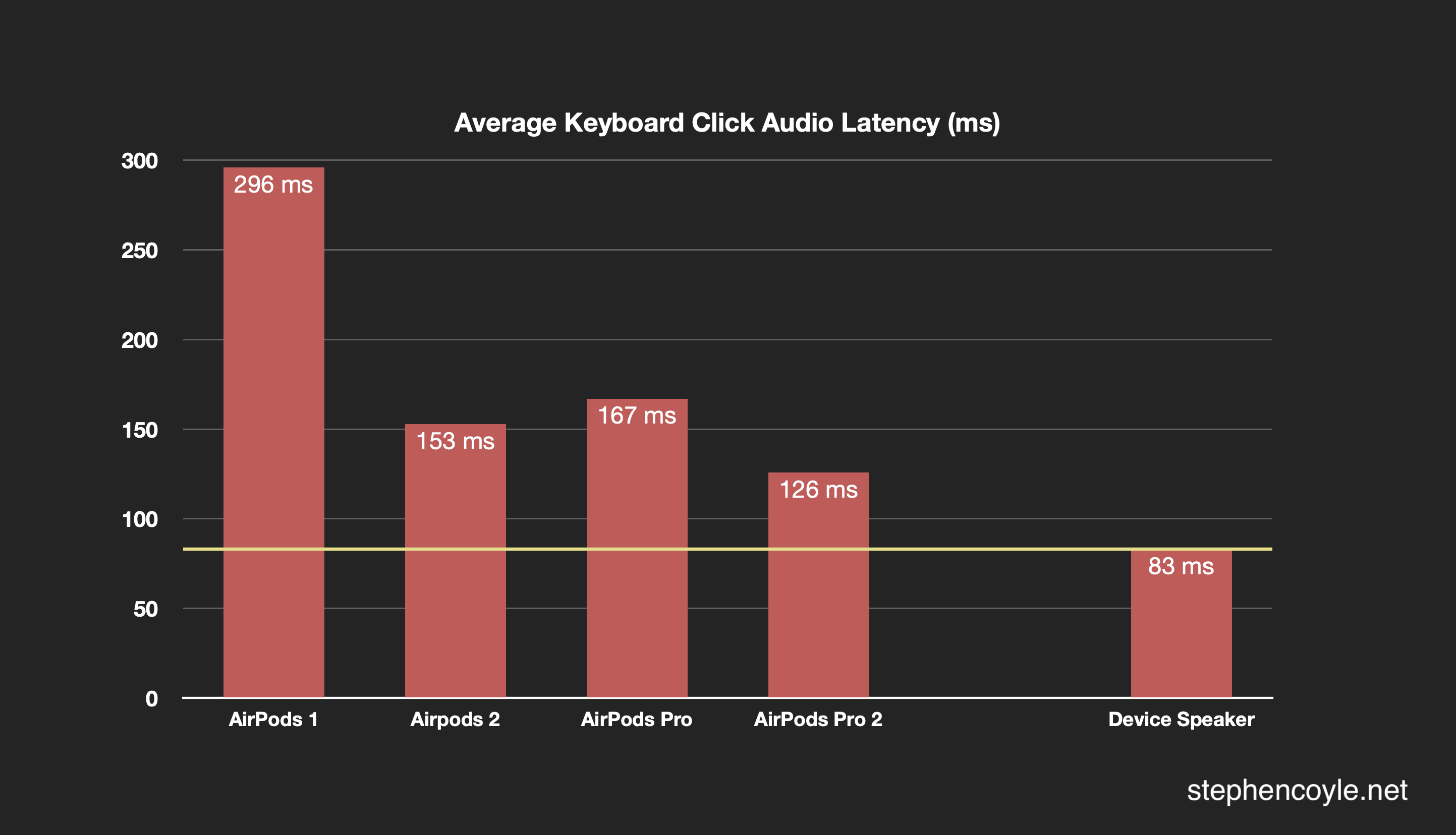AirPods Pro 2 pack a number of improvements over their predecessors, many of which are made possible by the new H2 chip inside. New testing performed by Stephen Coyle, a musician and software developer, reveals another hidden benefit of the new AirPods Pro 2 and the H2 chip: significant improvements in latency.
One of the downsides of Bluetooth (and wireless technologies in general) has always been latency. This is the time between when a sound occurs on your device and when that sound is then played through your AirPods. This isn’t a problem for things like video playback, where the video can be delayed slightly in order to ensure the audio is correctly lined up.
Where latency becomes a problem, however, is with what Coyle has previously referred to as “unpredictable” sounds, like notifications, sound effects, keyboard clicks, audio editing, and more.
The original AirPods Pro offered a significant improvement in latency performance compared to the original AirPods. The latest-generation AirPods Pro 2 take things even further. The testing methodology that Coyle uses consists of the following:
I’ve kept mostly the same testing methodology as before; I connect AirPods to an iPad Pro, and tap the screen with an Apple Pencil. I use an audio recorder to capture the sound of the physical taps, and the resulting audio, then measure the time between these sounds. One difference from previous tests is that I’ve decided to measure only keyboard click latency.

In the chart above, you can track the progress Apple has made in improving AirPods latency over the last several years. According to Coyle, the AirPods Pro 2 “perform about 40ms better than their predecessors, with an average latency of 126ms vs the original’s 167ms.”
He continues:
Perhaps a more interesting point to note is that the second-generation AirPods Pro perform only 43ms worse than the built-in speakers (at 83ms). That suggests that up to two-thirds of the time between touching the screen and hearing a noise occurs before Bluetooth data leaves the device.
Ultimately, Coyle concludes that he still believes there’s “too much latency for audio feedback to feel snappy and responsive” with AirPods Pro 2. But with that said, it’s possible there are further improvements that could be made on the device-side rather than to AirPods themselves.
You can see the full details of Coyle’s testing on his website.
FTC: We use income earning auto affiliate links. More.







